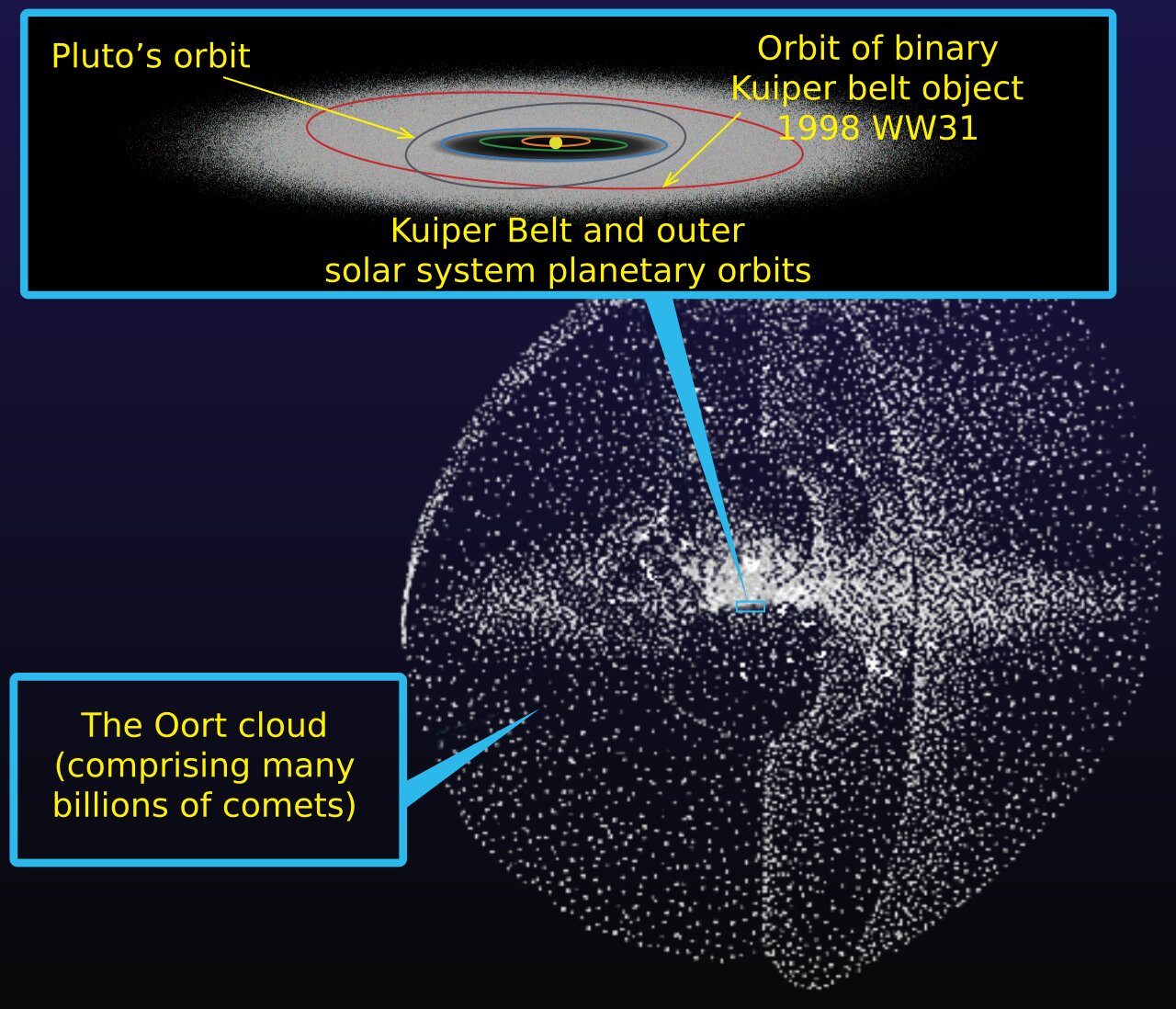
Does the Oort cloud exist? Possibly, but there is no way of knowing. It is still just a working theory.
The Oort cloud was first theorized by Jan Oort, a Dutch astronomer, in 1950. The idea is that a cloud of icy comets and planetesimals are orbiting the sun at a distance of about 0.03 to 3.2 light-years away. That is between 283 billion and 14 trillion kilometers away. The Oort cloud is not a disk, like Saturn has, but rather a ball that surrounds the solar system. The objects in the cloud don’t all orbit in the same direction, as with the planets. Instead they orbit in every direction.
So, why do some people think the Oort cloud doesn’t exist? Well, the easiest answer is because it cannot be proven. It is so far away that there is no way to get a probe to it. The Voyager 1 probe will be the first object made on Earth that gets far enough and that won’t happen for another 300 years. And the probe’s battery will have died out long before that so, even when it does there, it can’t send any information back.
If the Oort cloud is made of comets, planetoids, and ice, as theorized, then it will be very difficult to see it. The objects are too far away to reflect much light from our sun. They are too far apart to block out the light of stars or other galaxies. And, as with all space ice, they are covered in space dust which makes them almost black.
So, why do people think that the Oort cloud does exist? If it is impossible to see or impossible to test for, what is the reason? The main reason is the presence of long period comets that travel through the solar system.
Comets are lumps of ice, rock, and dust that can be as small as a few hundred meters in diameter and as big as tens of kilometers in diameter. They sail through the solar system and as they get closer to the sun the sun’s radiation and the solar wind start to vaporize the comet, releasing gas and large amounts of water vapor, The solar wind blows this into a long thin tail that can be hundreds of thousands of kilometers long and is always pointing away from the sun. If the comet comes close enough, it will vaporize completely ad disappear. If its orbit carries it far enough away before it vaporizes, it can continue for more orbits.
There are two types of comets: short period and long period comets. Short period comets have orbits of less than 200 years. Halley’s comet is a good example of a short period comet and it orbits the sun about once every 74 years. I say “about” because the vapor that comes out of it as it passes near the sun changes its orbit slightly each time. The short period comets orbit about as far as the outer planets, and the gravity of those planets also changes their orbit a little. Long period comets orbit from anywhere between 200 years to millions of years. Short and long period comets can easily be told apart because of the angle of their orbits.
Nobody knew where these short and long period comets came from, but it was theorized that the short period comets
So, why does the presence of long period comets suggest the Oort cloud exists? The trajectory of these comets means they cannot have come from outer space, which means they must have come from somewhere within the solar system. The only likely possibility is that there are trillions of comets orbiting the sun at the far reaches of the solar system and occasionally one of the gets knocked this way.
A similar hypothesis was raised for the short period comets as well, but their trajectory meant that their home must be much closer. Also, they always came in on the same plane which meant that they must orbit in the same plane as the planets. This was finally proven when the Kuiper belt was discovered in the late 80s. It had been theorized half a century earlier, but it was only in 1989, when the Voyager 1 passed through it and in 1992 when astronomers were able to see it that it could be proven. The same is true with the Oort cloud. It has not been proven yet, but it is the most likely hypothesis for the long period comets.
So, does the Oort cloud exist? Probably, but there is no way to test for it or see it yet. It is the most likely hypothesis for the existence of long period comets. And this is what I learned today.
Sources
https://socratic.org/questions/does-the-oort-cloud-exist-if-so-why-can-t-we-see-it
https://en.wikipedia.org/wiki/Oort_cloud
https://solarsystem.nasa.gov/solar-system/oort-cloud/overview/
https://astronomy.stackexchange.com/questions/14256/how-big-do-comets-get
http://apps.usd.edu/esci/creation/age/content/creationist_clocks/comets_disintegration.html

